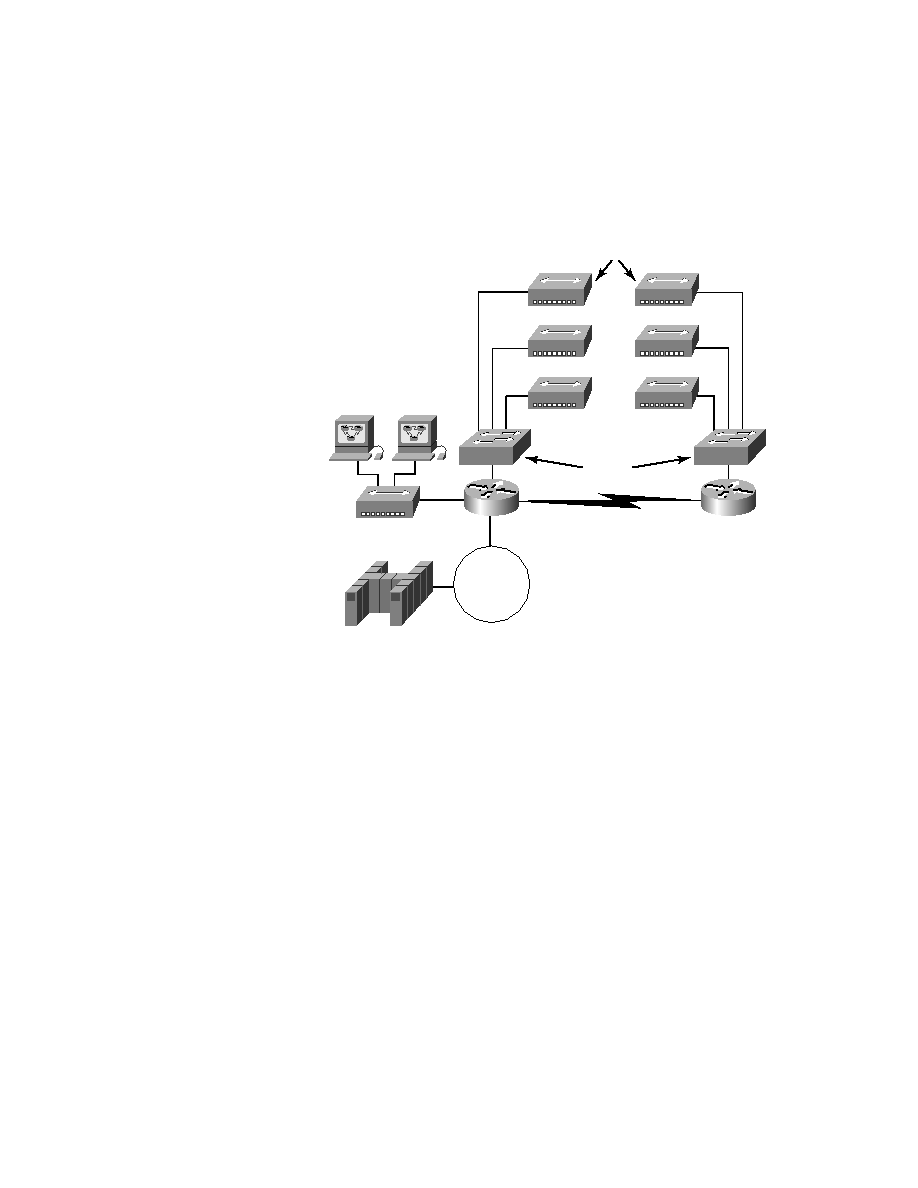
lision domain, each hub became its own separate collision domain. But there
was a catch--switch ports were still very new, and so, unbelievably expensive.
Because of that, simply adding a switch into each floor of the building just
wasn't going to happen--at least, not yet. Thanks to whomever you choose to
thank for these things, the price has dropped dramatically, so now, having
every one of your users plugged into a switch port is both good and feasible.
design would look something like Figure 2.3, a complete switched net-
work design and implementation.
tation, it now creates and handles logical segmentation. Those logical segments
are called VLANs, and I promise I'll explain them thoroughly--both in the
duration of this chapter and in Chapter 6, where they'll be given a starring role.